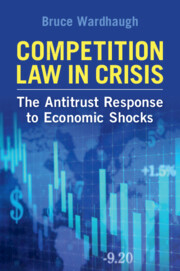Book contents
- Competition Law in Crisis
- Competition Law in Crisis
- Copyright page
- Dedication
- Contents
- Preface
- Acknowledgements
- Table of Authorities
- Introduction
- 1 The Legal Framework
- 2 The Pre–More Economic Approach to Competition’s Role in Crisis Management
- 3 The Post-MEA Relationship between Competition Law and Crisis Management
- 4 The Financial Crisis of 2008
- 5 The Covid-19 Crisis
- 6 Brexit
- 7 The Environment, Sustainability Goals and the Climate Crisis
- Conclusion
- Bibliography
- Index
4 - The Financial Crisis of 2008
Published online by Cambridge University Press: 04 August 2022
- Competition Law in Crisis
- Competition Law in Crisis
- Copyright page
- Dedication
- Contents
- Preface
- Acknowledgements
- Table of Authorities
- Introduction
- 1 The Legal Framework
- 2 The Pre–More Economic Approach to Competition’s Role in Crisis Management
- 3 The Post-MEA Relationship between Competition Law and Crisis Management
- 4 The Financial Crisis of 2008
- 5 The Covid-19 Crisis
- 6 Brexit
- 7 The Environment, Sustainability Goals and the Climate Crisis
- Conclusion
- Bibliography
- Index
Summary
This chapter considers the response of European authorities (both EU and Member State) to the 2008 financial crisis. It first considers the background to the financial crisis, particularly regarding how banks and other financial institutions shifted in the way in which mortgages were sold throughout the financial system. The second section uses the 2007 failure of the UK’s Northern Rock as an illustration. The third section examines the events of autumn 2008. It examines state aid regimes put in place not only to reintroduce stability into the financial system, but also to aid the recovery of the real economy. The fourth section considers merger policy in the financial crisis. In two Member States, the UK and the Netherlands, the competition authorities approved mergers that further concentrated already concentrated markets. We suggest that governmental responses to mitigate the consequences of the programme, via aid packages, were the appropriate response to mitigate the effects of this failure. However, a more lenient approach to merger control in the financial sector, which was seen in some Member States, was an inappropriate response.
Keywords
- Type
- Chapter
- Information
- Competition Law in CrisisThe Antitrust Response to Economic Shocks, pp. 101 - 132Publisher: Cambridge University PressPrint publication year: 2022

